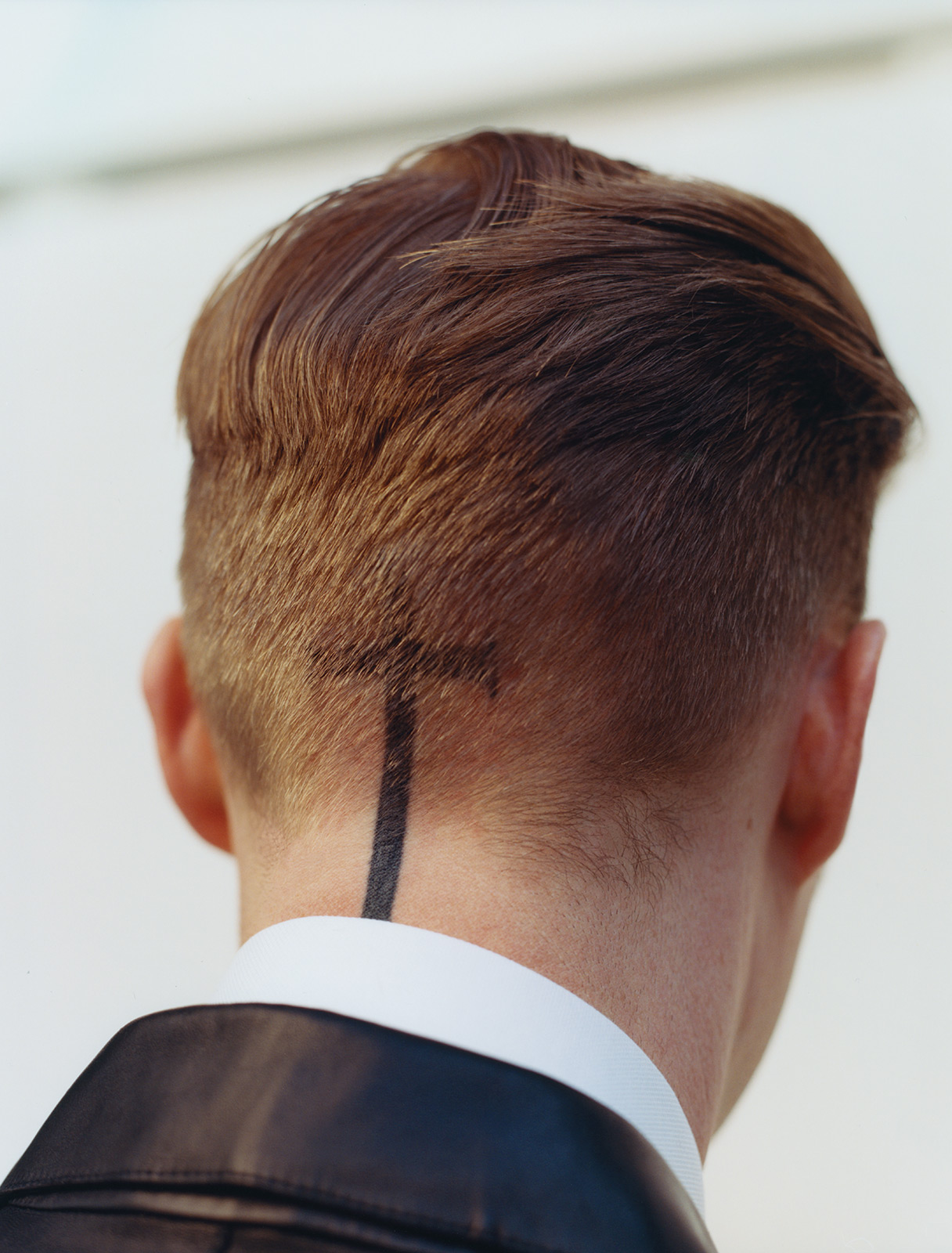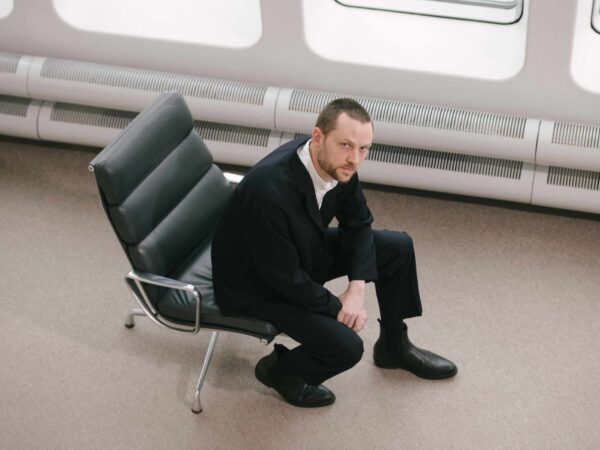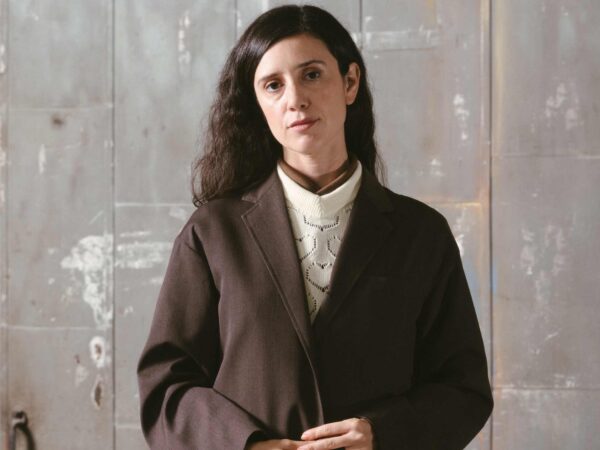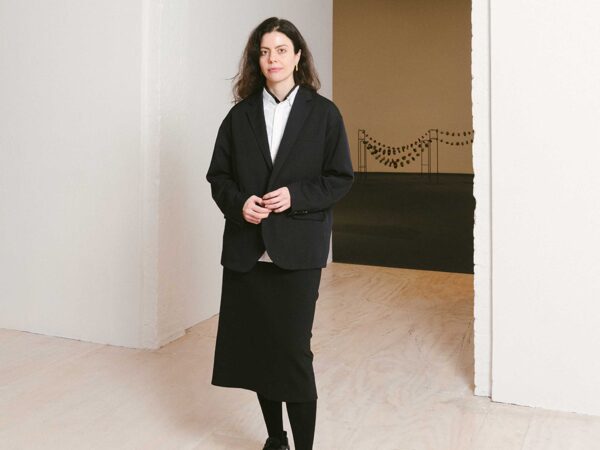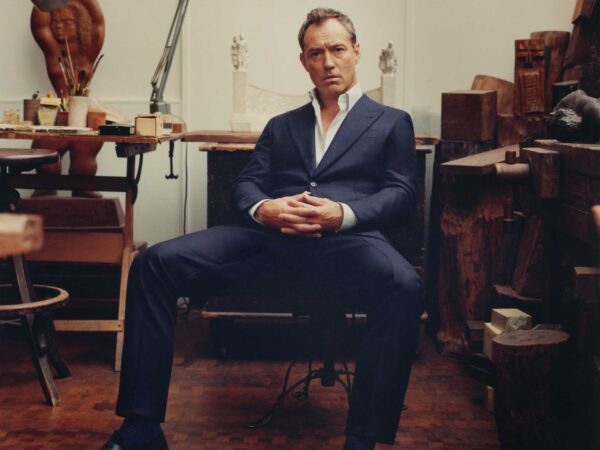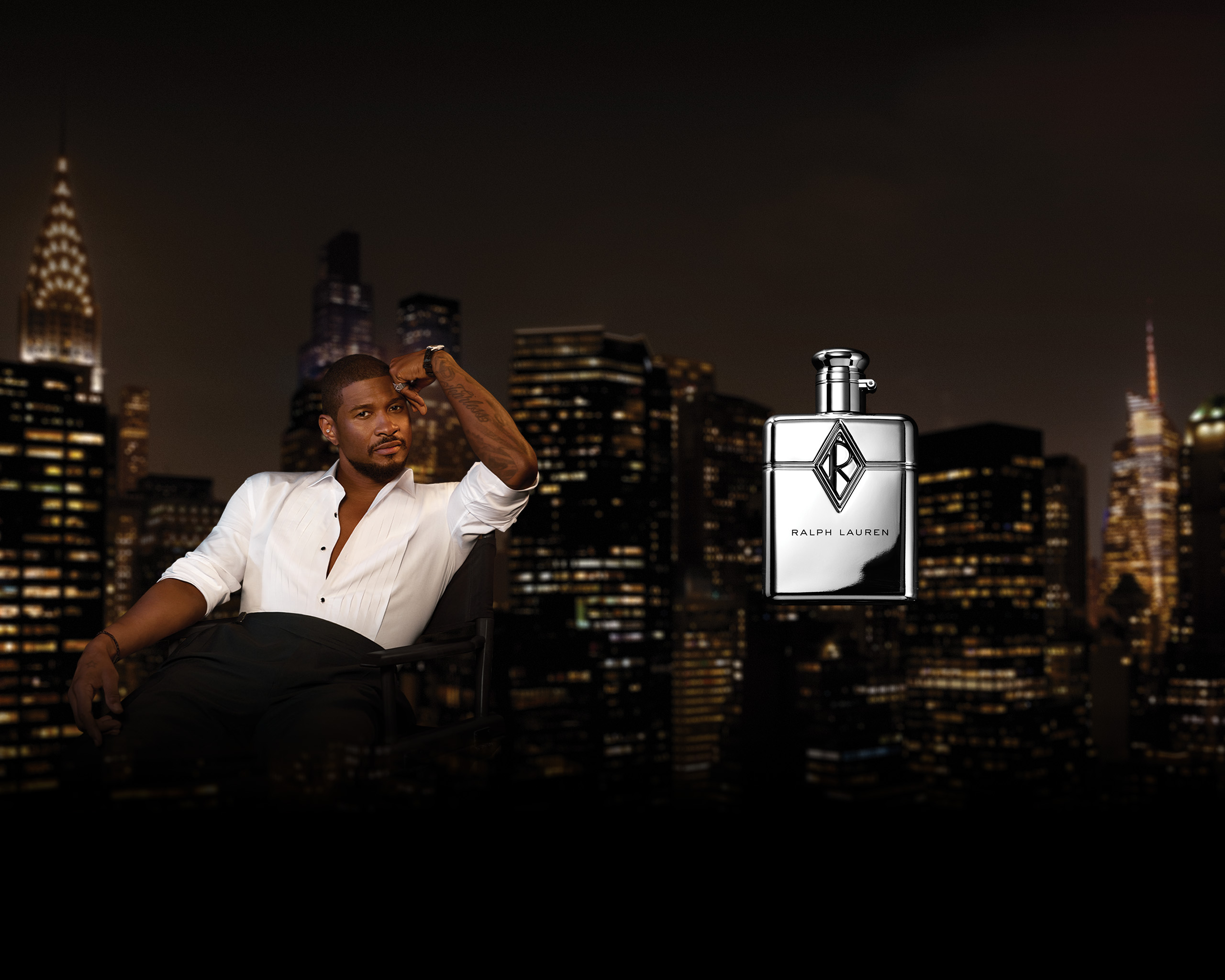
The designer of 1017 ALYX 9SM and the techno DJ discuss ephemerality and authenticity in the digital age for Document S/S 2019.
This conversation appears in Document No. 14, available for pre-order online now.
Fashion and music have always shared an intimate connection, with each industry constantly influencing and inspiring the other. This reciprocal bond can be seen in musical movements that have become synonymous with specific style codes, from baroque to hip hop. For 1017 ALYX 9SM founder Matthew Williams and self-styled “technoprincess” Sita Abellán, it’s a bond that proved foundational in their careers: Williams made a name for himself as both the creative director of Lady Gaga’s Haus of Gaga and the art director of Kanye West’s Donda, and Abellán amassed an impressive following on Instagram as a model and DJ before catching the eye of Rihanna, who cast her in the video for “Bitch Better Have My Money” and the Spring 2017 Fenty x Puma show.
Chicago-born and Pismo Beach-raised, Williams currently resides in Ferrara, Italy, a mere 20 minutes from the factories that produce 1017 ALYX 9SM garments. Launched in 2015, 1017 ALYX 9SM (originally dubbed Alyx) was met with anticipation from the harbingers of streetwear hype, as Williams was previously known for co-founding the buzzy art and DJ collective Been Trill with Virgil Abloh and Heron Preston. 1017 ALYX 9SM contains traces of Williams’s past, marrying the utility of streetwear and the luxury of immaculate leatherwork, and creating devotees out of Kanye West, A$AP Rocky, and Bella Hadid. Williams also merges human touches with the propulsion of technology, as he did with his Nike x MMW collaboration, which had its runway debut in Paris last summer. Meanwhile, Abellán, a cobalt-haired, street-style starlet, explored the consumerism of the tech era in her 2018 merch line “Techno Capitalism,” acknowledging social media as a double-edged sword that both launches careers and floods the cultural market.
During Paris Fall/Winter 2019 Fashion Week, Williams and Abellán found a moment to discuss the ever-evolving fashion and music landscapes. Though they’re only eight years apart, their relationships to social media and the internet differ significantly: Wary of its immediacy, Williams approached Instagram as a tool to use with caution, whereas Abellán credits Tumblr for the start of her modeling career, saying the platform served as her window to see worlds beyond her hometown of Murcia, Spain—and for those worlds to see her. Together, Williams and Abellán unpack the effects of technology on their art and their mutual determination to never compromise personal style.
Above The Fold

Sam Contis Studies Male Seclusion

Slava Mogutin: “I Transgress, Therefore I Am”

The Present Past: Backstage New York Fashion Week Men’s Spring/Summer 2018

Pierre Bergé Has Died At 86

Falls the Shadow: Maria Grazia Chiuri Designs for Works & Process

An Olfactory Memory Inspires Jason Wu’s First Fragrance

Brave New Wonders: A Preview of the Inaugural Edition of “Close”

Georgia Hilmer’s Fashion Month, Part One

Modelogue: Georgia Hilmer’s Fashion Month, Part Two

Surf League by Thom Browne

Nick Hornby: Grand Narratives and Little Anecdotes

The New Helmut

Designer Turned Artist Jean-Charles de Castelbajac is the Pope of Pop

Splendid Reverie: Backstage Paris Haute Couture Fall/Winter 2017
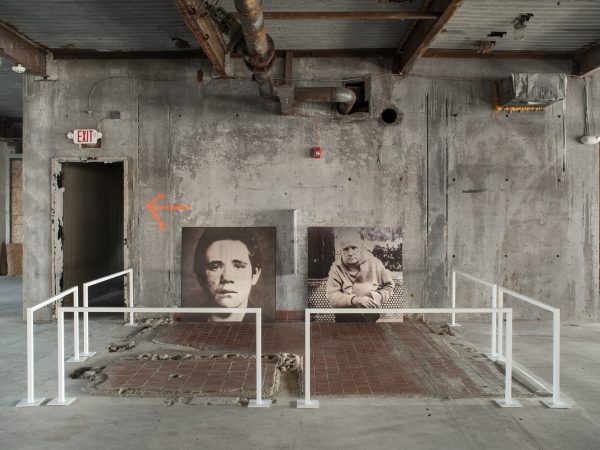
Tom Burr Cultivates Space at Marcel Breuer’s Pirelli Tire Building

Ludovic de Saint Sernin Debuts Eponymous Collection in Paris

Peaceful Sedition: Backstage Paris Fashion Week Men’s Spring/Summer 2018
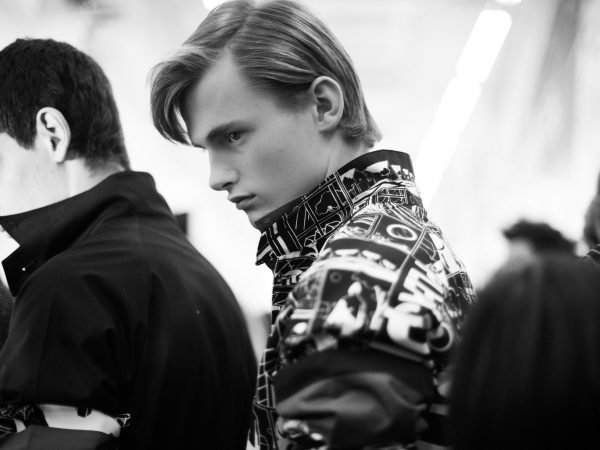
Ephemeral Relief: Backstage Milan Fashion Week Men’s Spring/Summer 2018

Olivier Saillard Challenges the Concept of a Museum

“Not Yours”: A New Film by Document and Diane Russo

Introducing: Kozaburo, 2017 LVMH Prize Finalist

Introducing: Marine Serre, 2017 LVMH Prize Finalist

Conscious Skin

Escapism Revived: Backstage London Fashion Week Men’s Spring/Summer 2018

Introducing: Cecilie Bahnsen, 2017 LVMH Prize Finalist

Introducing: Ambush, 2017 LVMH Prize Finalist

New Artifacts

Introducing: Nabil Nayal, 2017 LVMH Prize Finalist

Bringing the House Down

Introducing: Molly Goddard, 2017 LVMH Prize Finalist

Introducing: Atlein, 2017 LVMH Prize Finalist

Introducing: Jahnkoy, 2017 LVMH Prize Finalist

LVMH’s Final Eight

Escaping Reality: A Tour Through the 57th Venice Biennale with Patrik Ervell

Adorned and Subverted: Backstage MB Fashion Week Tbilisi Autumn/Winter 2017

The Geometry of Sound

Klaus Biesenbach Uncovers Papo Colo’s Artistic Legacy in Puerto Rico’s Rainforest

Westward Bound: Backstage Dior Resort 2018

Artist Francesco Vezzoli Uncovers the Radical Images of Lisetta Carmi with MoMA’s Roxana Marcoci

A Weekend in Berlin

Centered Rhyme by Elaine Lustig Cohen and Hermès

How to Proceed: “fashion after Fashion”

Robin Broadbent’s Inanimate Portraits

“Speak Easy”

Revelations of Truth

Re-Realizing the American Dream

Tomihiro Kono’s Hair Sculpting Process

The Art of Craft in the 21st Century

Strength and Rebellion: Backstage Seoul Fashion Week Autumn/Winter 2017

Decorative Growth
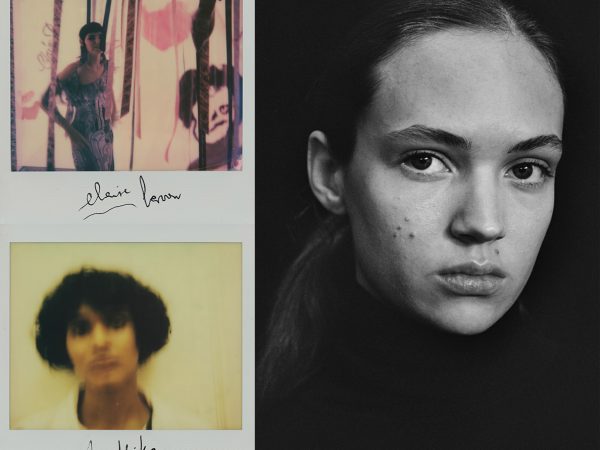
The Faces of London

Document Turns Five
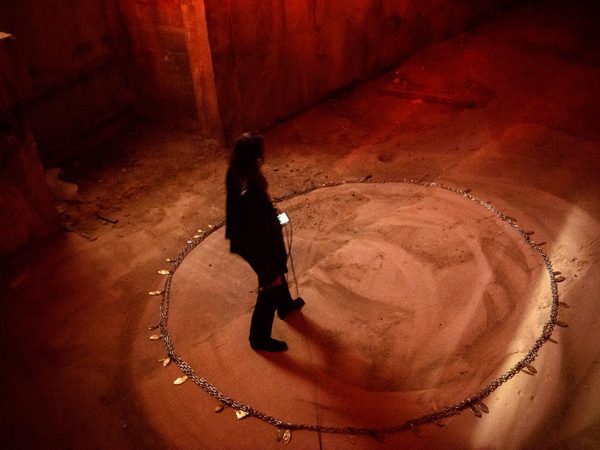
Synthesized Chaos: “Scholomance” by Nico Vascellari

A Whole New World for Janette Beckman

New Ceremony: Backstage Paris Fashion Week Autumn/Winter 2017
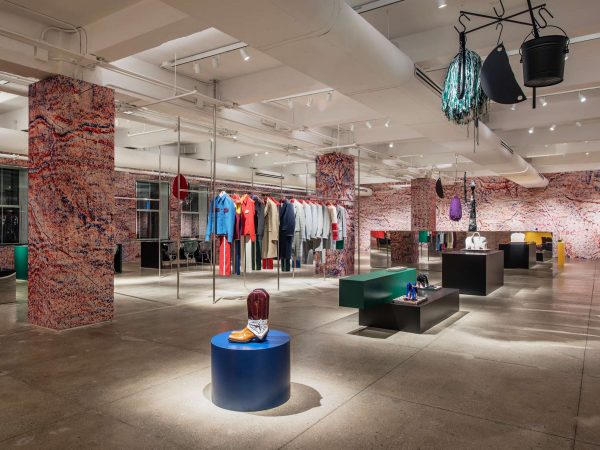
New Perspectives on an American Classic

Realized Attraction: Backstage Milan Fashion Week Autumn/Winter 2017

Dematerialization: “Escape Attempts” at Shulamit Nazarian

“XOXO” by Jesse Mockrin

Brilliant Light: Backstage London Fashion Week Autumn/Winter 2017

The Form Challenged: Backstage New York Fashion Week Autumn/Winter 2017

Art for Tomorrow: Istanbul’74 Crafts Postcards for Project Lift

Inspiration & Progress

Paskal’s Theory of Design

On the Road

In Taiwan, American Designer Daniel DuGoff Finds Revelation

The Kit To Fixing Fashion
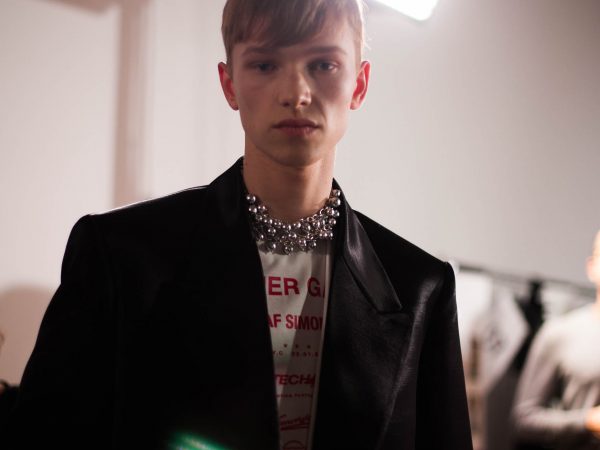
The Game Has Changed: Backstage New York Fashion Week Men’s Autumn/Winter 2017

Class is in Session: Andres Serrano at The School

Forma Originale: Burberry Previews February 2017

“Theoria”

Wearing Wanderlust: Waris Ahluwalia x The Kooples

Approaching Splendor: Backstage Paris Haute Couture Spring/Summer 2017

In Florence, History Returns Onstage

An Island Aesthetic: Loewe Travels to Ibiza

Wilfried Lantoine Takes His Collection to the Dancefloor

A Return To Form: Backstage New York Fashion Week Spring/Summer 2018

20 Years of Jeremy Scott

Offline in Cuba

Distortion of the Everyday at Faustine Steinmetz

Archetypes Redefined: Backstage London Fashion Week Spring/Summer 2018

Spring/Summer 2018 Through the Lens of Designer Erdem Moralıoğlu

A Week of Icons: Backstage Milan Fashion Week Spring/Summer 2018

Toasting the New Edition of Document

Embodying Rick Owens

Prada Channels the Wonder Women Illustrators of the 1940s
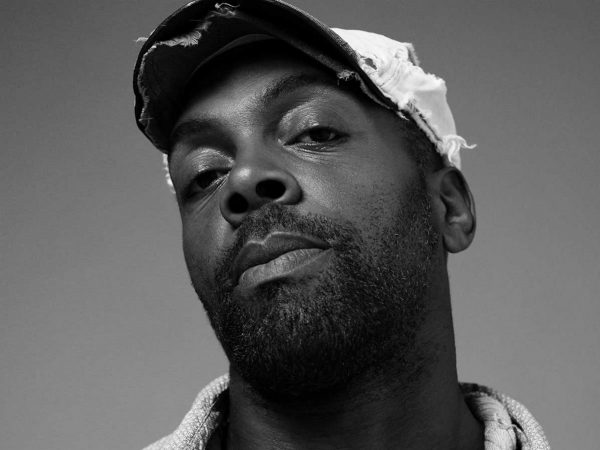
Andre Walker’s Collection 30 Years in the Making

Fallen From Grace, An Exclusive Look at Item Idem’s “NUII”

Breaking the System: Backstage Paris Fashion Week Men’s Autumn/Winter 2017

A Modern Manufactory at Mykita Studio

A Wanted Gleam: Backstage Milan Fashion Week Men’s Autumn/Winter 2017

Fashion’s Next, Cottweiler and Gabriela Hearst Take International Woolmark Prize

Beauty in Disorder: Backstage London Fashion Week Men’s Autumn/Winter 2017

“Dior by Mats Gustafson”

Prada’s Power

George Michael’s Epochal Supermodel Lip Sync

The Search for the Spirit of Miss General Idea

A Trace of the Real

Wear and Sniff

Underwater, Doug Aitken Returns to the Real
Document—You’ve both operated at the intersection of fashion and music. Can you speak about the relationship between those two worlds in your lives and careers?
Matthew Williams—For me, fashion was always really formative. Going out to clubs and seeing how people were dressed was always really inspiring. And then there’s the whole ritual of getting dressed for the club. So both have always gone hand in hand for me.
Sita Abellán—I feel the same. Both worlds fuel my passion. I DJ, but I’ve loved fashion since I was very young. I’m from a small town, and I used to dress up like crazy to go out. I considered myself a club kid.
Document—You both have very distinct styles. Is there anything you hope to communicate, whether it’s you with your designs, Matthew, or you with your personal style and jewelry line, Sita?
Sita—I think I’m just expressing myself, so I’m just communicating my personality. You can see it in my clothes. When I wake up, depending on the way I feel, that’s how I dress.
“I am interested in a more soulful approach and how to bring a warmth and a human feel to the future. I think there are so many versions of the future that are very cold.”
Matthew—I really love that about you, Sita. Because when we were in Milan [for Fashion Week], we were staying at the same hotel. I would see you super early in the morning, and you’d be dressed perfectly. I saw you at around three in the morning at the Dixon set, and you were still looking amazing. I think that’s what’s really inspiring about people that we get to meet and work with in fashion, is that expression of individuality. I love that about the work.
Document—What do you think of the increasing role that technology plays in art, music, and fashion? Matthew, you’ve mentioned that you see your role as bringing emotion to your design, and I think that’s especially interesting in the context of very technical clothing.
Matthew—Well, we do make technical clothing with Nike, and there are aspects of technical materials and fabrics, but we also use natural fibers that were grown with water and had the sunlight hit them, like wool and cotton and leather. I think those kinds of materials have a lot of soul to them. I’m interested in a more soulful approach and how to bring a warmth and a human feel to the future. I think there are so many versions of the future that are very cold. How can it have a more human touch? As far as technology and integrating fashion, that’s my approach: How can I use all these different materials and have it still retain some soul? At the same time, though, there are things like sustainability—there are new technologies that allow clothing to be made in a way that’s more conscious and better for the environment. That’s interesting to explore.
And there’s also the technology of how we listen to music now. Fashion had a whole different context and reason for use before streaming music and the internet. People would go out to nightclubs to hear new songs for the first time. And that would be a place of congregation. You wouldn’t be able to see clothing unless you bought fashion magazines or went to the shows, whereas now, you see everything instantly. So maybe there’s less pressure to dress up more, and casual culture is a little more dominant in the mainstream because people aren’t having to dress up to go congregate as much anymore. Everything plays hand in hand. For me, it’s just about questioning the relevance of why things should exist today. And I think that’s the most modern thing to do: what things should be, what things should become, and just being careful, especially, not to perpetuate out-of-date models.
Document—I’d love for you to speak more about sustainability and how you’re integrating that into your work.
Matthew—The first thing is just making something that lasts forever or a really long time, so people don’t have to throw it away. That’s the most sustainable thing. And then there are ways of recycling. We collect textile waste from the cutting room floor and grind it back up and make new yarn from it. So you’re saving water because the cotton doesn’t need to grow in the land, and you’re saving the energy of harvesting the cotton. Even with some of our solid colors, there’s no dying needed, so then there’s water saved. Each one of our recycled t-shirts saves 1,000 gallons of water. Then there’s different dying processes through coating that you can do with color. We also do technical garments using recycled fishing line.
Another key point about sustainability is that it’s an ongoing conversation in our industry. Every brand is kind of figuring out what they believe. There’s this gathering called the Copenhagen Fashion Summit where our whole industry gets together and talks about what’s working and what’s not working—what’s best for everybody.
One really important point is, even if you’re promoting recycling and using biodegradable fabrics, it doesn’t matter if you don’t give the consumer a place to recycle or a place to biodegrade something safely. So I think the next step in the evolution of our industry is having customers get used to completing that loop. It involves communication, awareness about what’s possible, and just people opening their minds to a new way of working.
Document—Sita, in the past, you’ve spoken out against consumerism.
Sita—The merch line I made about two years ago was about how we as a society consume technology in general, but especially the internet. I use social media a lot. How I started to work, how I came out of my small town, it was all thanks to the internet. It was a great tool for me. But as Matthew says, the way we all consume fashion or music right now is totally different from 20 or 30 years ago. Now, fashion is accessible to everyone—everyone is able to see the shows from their house. I don’t think it’s 100 percent positive. It gives away too much power. That amount of exposure and accessibility can be good, but in another way, there is a lot of bullshit also on the internet, and it can add to that. But I cannot say too many bad things about [the internet], because it is my tool, and without it I wouldn’t be here.
I find this duality interesting. Even the critiques I made with my merch line were about how people consume social media, and how if you go on the internet you can access everything.
“Fashion [and music] had different contexts and reasons for use before the internet. People would go out to nightclubs to hear new songs.
You wouldn’t be able to see clothing unless you bought fashion magazines or went to the shows.”
Document—How have internet culture and social media impacted your art?
Sita—In my town in the south of Spain, I felt very misunderstood by everyone. When I was a teenager, I used to go out in the street wearing all the crazy clothes that I wear right now. And everyone would look at me like I might be crazy—like, ‘What is she doing?’ With the internet, I found a lot of people with whom I might have some connection. Apart from the inspiration, it made me feel that I wasn’t alone. I was just studying in school, and going back home to study. And then I’d be in my mom’s wardrobe, taking out her vintage clothes, and taking pictures of myself. I was 12, and I’d post the pictures on Tumblr and Facebook. That’s how I started to work as a model. I loved Tumblr, when that was, like, the cool thing.
Matthew—It’s cool hearing that story, Sita. I’m a little bit older—I’m 33—and when I started working in fashion, you didn’t know what a designer looked like. You just went into the stores and liked a brand by how the clothes looked. At the beginning, I was uncomfortable posting my picture on Instagram. It took a little bit for me to get more free on social media. And for our business, I think it’s really allowed for us to communicate exactly what we believe to the people that want to listen to what we have to say. So we don’t have to speak through the press or stores or anything.
In the past, maybe we would’ve been strong in New York first, and then done stuff in L.A., and then maybe gone to London or Paris, and then Tokyo. Everything would grow at different rates. But now, because everyone is so aware of things that are happening everywhere at the same time, our brand is growing equally in every place around the world. I think we’ve grown a lot quicker as a brand than we would have ten years ago.
“I’d be in my mom’s wardrobe, taking out her vintage clothes, and taking pictures of myself. I was 12, and I’d post the pictures on Tumblr. That’s how I started to work as a model.”
Document—You’ve both collaborated with some huge brands. Sita, you’ve worked with Fendi, and Alyx has collaborated with Nike, Moncler, and Vans, to name a few. How do you maintain your voice and your point of view when working with these institutions?
Sita—When I designed the bag [with Fendi] I actually was scared that they wouldn’t like it. Like, somehow it was too much me, and maybe not very Fendi because it was not a very clean bag. I was very impressed when I went to Rome to finalize the design. They were actually doing everything that I asked them to do on the bag. They didn’t say, ‘Oh, you need to do it more classy.’ They just gave me freedom to do what I wanted to do. So I don’t find that I need to compromise for anyone. If I’m expressing myself, I don’t want to have boundaries or rules or limits. If they are calling me to design something, they already know how I do things. When I work with someone, obviously they have their own vision, but I have mine, too. And I think that if I have to compromise, then it’s not me, and I shouldn’t be there doing that, you know?
Matthew—I think that’s a great way to be as an artist collaborating with a brand. From my side, all the collaborations are different, for many different reasons: How big is the company that you’re working with? Is it a collaboration that is just about creativity and doing something cool, or is it something that has business attached to it? What country is the company from? Because there are lots of cultural differences in business.
Sita—Yeah, that’s true. But you would never do something that you didn’t like.
Matthew—No, definitely not.
Sita—You would never compromise your taste or your vision.
Matthew—For us, when we look for a collaboration, it’s more like, ‘What does that collaborator offer that we could never do ourselves, whether that’s a type of garment or fabric or speaking to something specific?’ Most of the time, it’s been an actual product that we would never be able to make. And then, sometimes, it comes with an audience that we would never be speaking to normally, and in turn, that broadens the people who get to engage with Alyx. Each one is different, and some are easier than others, but I think it’s quite modern to do collaborations with like-minded people. I’m sure there’s always a little compromise, but hopefully there’s not too much with the end vision.
Document—What is inspiring you now—whether it be specific people, movements, or musicians?
Sita—It might sound creepy, but I love to observe people. I love to be walking on the street and look at what people are wearing. I see a little detail on a trouser, or maybe a sleeve, and then that sleeve comes into my head when I’m designing something. I also find inspiration in music, films, everything.
“I don’t need to compromise for anyone. If I’m expressing myself, I don’t want to have boundaries or rules. When I work with someone, they have their own vision, but I have mine, too.”
Document—Is there any music you’re into right now?
Sita—Usually techno. But when I started to have an interest in fashion, as a teenager, I used to watch a lot of punk music videos. What I put into what I wear—what I design—I think it’s more from the feeling the music gives me than what I see with my eyes. With punk, it was more about the aesthetic of it. I got a lot of inspiration from the punk scene. But I don’t listen to punk music anymore. Matthew, do you also get inspired by techno?
Matthew—Sometimes, it’s more about being out and in the club. Not specifically about the music, just the energy of being at a party or a place with friends. For me, it changes each season. Sometimes it’s just music that I’m listening to over and over again, or an image, or a place. But it’s really changed throughout my life. When I was younger, it was all about skateboarding and the cities I was in, whether that was L.A. or New York or London or Paris. The cities gave me a lot. Now, as I’m getting older, it’s more about looking inward: my kids, my wife, nature, things like that. I’m a little bit more zen about where the inspiration comes from. But it’s all part of the journey.


